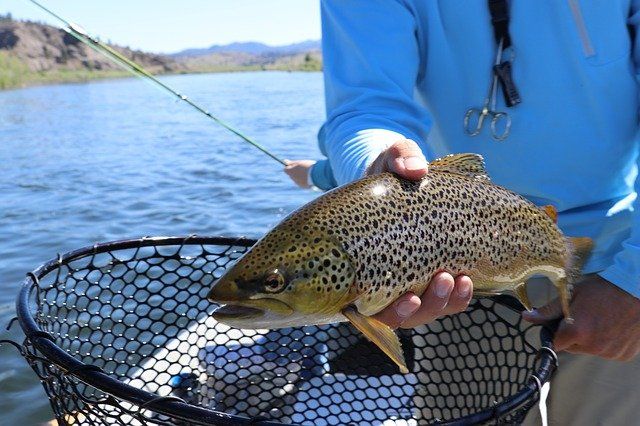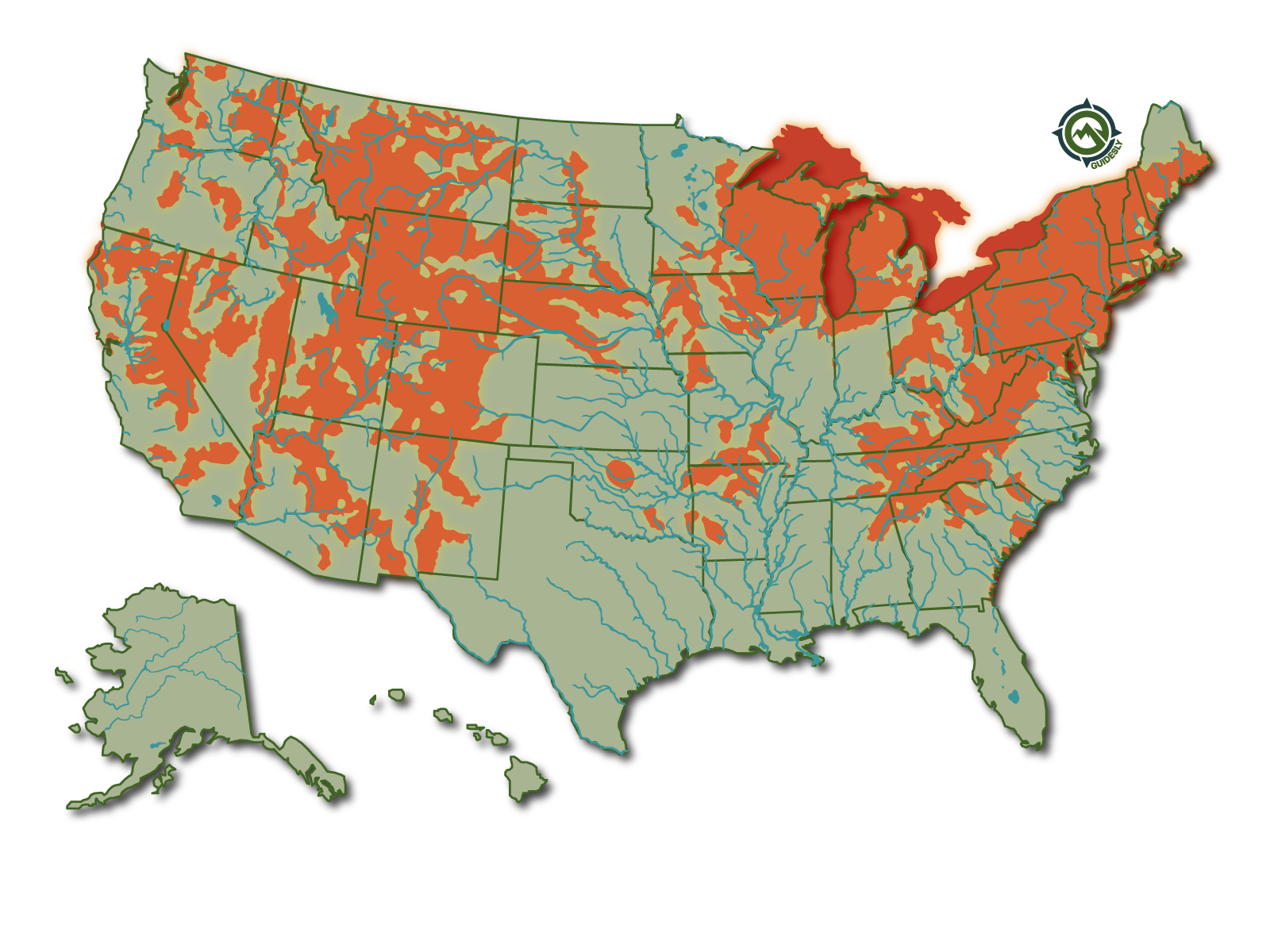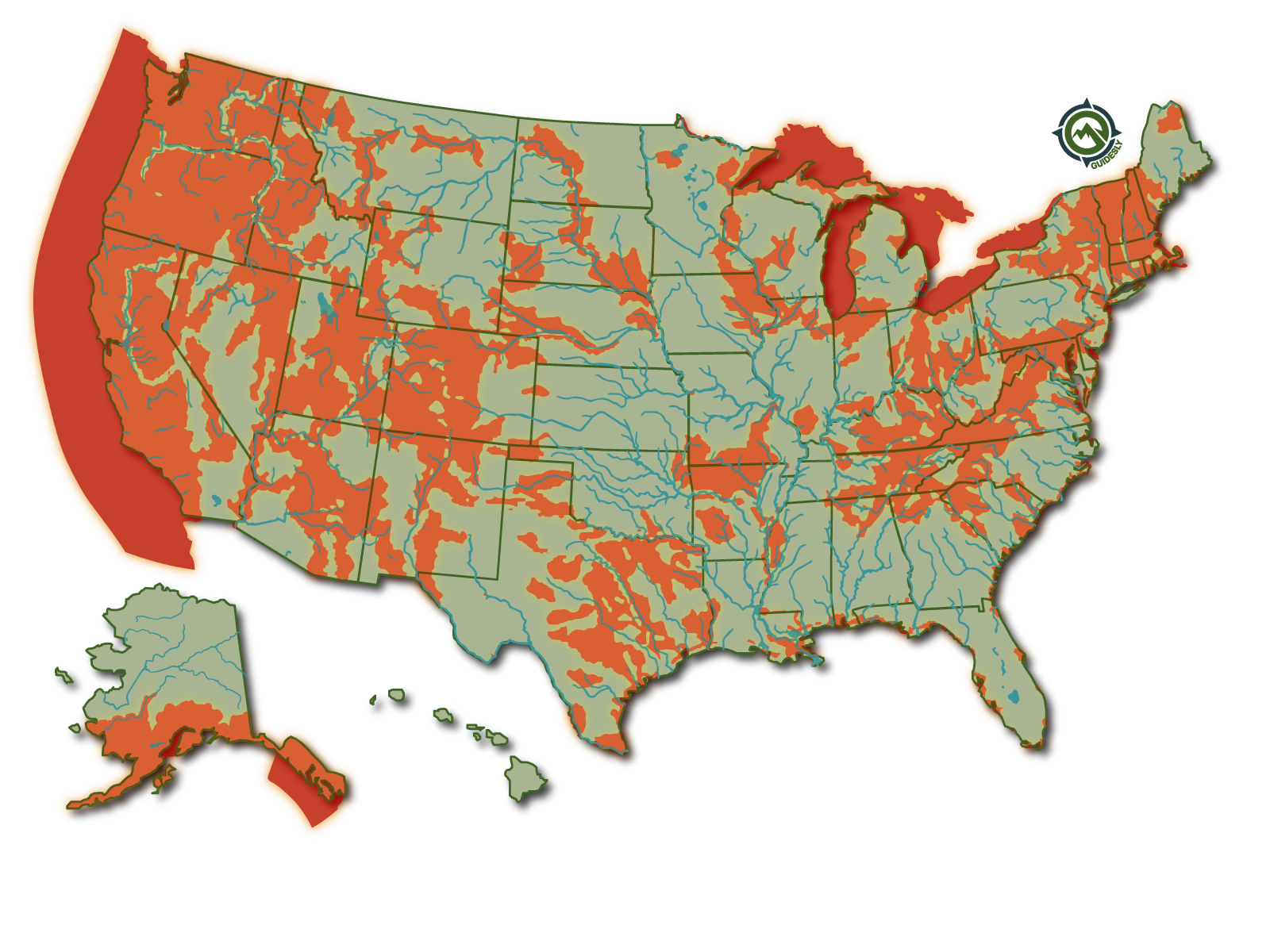Top-Rated Western NY River Fishing | Streamside
- Published Date: July 16, 2025
- Fishing
- Chautauqua Lake
- $300 - $400 price range
- Updated Date: October 10, 2025
Summary
%2F%2Fusers%2F654d630e-6731-435d-8019-e48de6260c6c%2Fratecard%2F469044617_122126154542516879_563540857427631423_n.jpg&w=1200&q=75)
Western NY Trout Action


Reel in Trophy Trout in Western NY Waters
Ready to chase some seriously chunky browns and steelies? Grab your waders and let's hit the water for a private guided trip that'll have you grinning from ear to ear. We're talking 6 hours of prime fishing time on Western New York's top trout waters - from the rushing tributaries of Lake Erie to the icy expanse of Chautauqua Lake. Whether you're a seasoned pro or just getting your feet wet, our local guides know exactly where the big ones are hiding. So polish up that lucky lure and get ready for some world-class trout action!
What's the Deal?
Here's the lowdown on your day with Streamside Angling: We kick things off bright and early at 7 AM, giving you the best shot at those dawn-feeding trout. For 300 bucks, you'll get a full 6 hours of one-on-one time with a guide who eats, sleeps, and breathes these waters. We keep things intimate with just 1-2 anglers per trip, so you'll have plenty of elbow room to perfect that cast. Don't sweat the gear - we've got top-notch rods, reels, and tackle covered. Just remember to pack your own waders and boots for steelhead trips, and we'll handle all the ice fishing gear if we're hitting the hard water. Oh, and don't forget to swing by the bait shop for your NYS fishing license before we meet up!
Techniques That Land Lunkers
Alright, let's talk strategy. When we're chasing browns and steelies, we've got a few tricks up our sleeve. In the rivers, we might be nymphing deep pools, swinging streamers through runs, or dead-drifting egg patterns. It's all about reading the water and matching the hatch. For steelhead, be ready to battle - these chrome rockets will test your drag and your forearms. Out on Chautauqua during ice season, we'll be jigging through holes or setting tip-ups, maybe even sight-fishing if the ice is clear. No matter the technique, our guides will have you dialed in faster than you can say "Fish on!"
Species You'll Want to Hook
Brown Trout: These buttery-bellied beauties are the pride of Western NY waters. Known for their selective feeding and wily nature, hooking into a big brown is like solving a fishy puzzle. They'll cruise the deeper pools and undercut banks, often most active during low light conditions. Fall is prime time as they bulk up for spawning, with some real footballs in the 5-10 pound range not uncommon. The challenge? Browns are notoriously spooky, so stealth and precise presentation are key. When you do connect, be ready for some acrobatics - these guys know how to throw a hook!
Steelhead Trout: If browns are the clever puzzle, steelhead are the adrenaline rush. These lake-run rainbows surge into the tributaries starting in fall, with waves of fresh fish entering through spring. Expect to tangle with chrome-bright missiles in the 5-15 pound class, with some true giants pushing 20+. Steelhead fishing is as much about the journey as the catch - you'll be wading icy waters, reading subtle current seams, and making long drifts. When a hot steelhead decides to run, hold on tight! The combination of raw power and acrobatic leaps makes landing one of these silver torpedoes a true badge of honor for any angler.
Why Anglers Keep Coming Back
Look, I could go on all day about why this trip is a must-do, but let's cut to the chase. First off, the variety is insane. One day you're battling steelhead in a rushing tributary, the next you're finessing browns in a quiet pool, and come winter, you're pulling slabs through the ice. It's like a greatest hits of trout fishing all in one area. Then there's the scenery - we're talking pristine rivers cutting through forests that light up like fire in the fall. But the real kicker? It's the moments. That heart-stopping second when a monster brown sips your dry fly. The run of a fresh steelhead that has your reel singing. The high-fives and grins when you land a personal best. Those are the things that keep folks coming back year after year.
Time to Wet a Line
Alright, let's not beat around the bush - if you're itching to tangle with some world-class trout, Western NY is calling your name. We've got the spots, we've got the know-how, and we're ready to put you on fish. Whether you're dreaming of that wall-hanger brown or the steelhead that'll make your arms ache, this is your chance to make it happen. Dates fill up fast, especially during peak seasons, so don't wait to lock in your spot. Give us a shout, and let's get you out on the water for a day of fishing you won't forget. Trust me, the only thing you'll regret is not booking sooner!
Learn more about the species
Brown Trout
Brown Trout (Salmo Trutta) Description
Brown Trout are medium-sized premier cold-water game and sport fish. It has been introduced in suitable environments globally and is considered the backbone of many fisheries. These fish have brown or golden-brown backs and a yellowish or white belly. The back and sides are covered with black spots. Head and tail are sometimes spotted. There is a small reddish or orange adipose fin near the tail. Brown trout can be distinguished from similar salmon by their vomerine teeth.
Brown trout resembles Brook trout, Chinook salmon, Coho salmon, and Rainbow trout.
Brown Trout Size and Weight
The average size for this fish is 8-24 inches but can grow up to 39 inches depending on the habitat. They can weigh from 1 – 9.5 pounds.
When were Brown Trout Introduced in the United States?

Brown trout, a native of Europe and Asia, was first introduced to the United States in 1883. The species was brought to Michigan by Fred Mather, a fish enthusiast who believed brown trout would be an excellent addition to American waters. The introduction of brown trout was met with great excitement by anglers across the country, as this species is known for its fighting ability and delicious taste.
Since its introduction over a century ago, brown trout has become one of the most popular game fish in the United States. Today, it can be found in almost every state and is especially abundant in western rivers and streams. One of the reasons for its success is its adaptability - brown trout can thrive in cold and warm water environments.
To keep up with the demand from anglers, many states have implemented stocking programs to increase brown trout populations.
Interesting Facts
The Brown Trout live for 12 years but can have an extended life span of up to 18 or 20 years.
Brown trout can be found on almost every continent except Antarctica and many can be found living in the ocean.
They are stocked in 45 states as it's a popular game fish. They are self-sustaining in 34 states.
The Brown Trout is a Guidesly employee favorite to catch on a run!
Where do Brown Trout Live in the United States?

Brown Trout prefers to live in covers and cool, clear, and calm waters. A temperature of 54°F to 65°F is ideal for these fishes but can survive up to 75°F. Sea trout travel to brackish or ocean waters and return to freshwater for spawning. Found in small streams, large rivers, and any trout stream with the right water temperature, aquatic insects, and clean water. This species is usually restricted to freshwater, though a few migrate to the sea between spawnings.
Widely distributed, the Brown Trout can be found throughout 45 states and Canada.
Spawning
The spawning season for these fish starts in fall and early winter. River trout look for a head riffle or a freshwater stream to spawn. The site is dug by the females, where the eggs are laid and covered with gravel. Hatching occurs in spring.
Diet
Brown trout consume aquatic insects, salamanders, frogs, worms, crustacean mollusks, and other fish. In the sea, they eat alewives and other small fish.
Are Brown Trout Good to Eat?
Many people enjoy catching brown trout for sport, others wonder if it's good to eat. The answer is yes, brown trout can be a delicious and healthy addition to your diet.
The taste of brown trout depends on various factors, such as the quality of the water they inhabit, their diet, and how they are cooked. Generally speaking, brown trout has a mild flavor that is slightly sweet with a firm texture. It's often compared to rainbow trout or salmon but with a milder taste.
To cook brown trout, you can grill it with some lemon juice and herbs for added flavor. Pan-frying or baking are also great options that allow the natural flavors of the fish to shine through. Just make sure not to overcook it, as this can result in dry and tough meat.
Fishing Techniques - How to Catch Brown Trout
During the fall season, Brown Trout feed aggressively at night. They can be found in deep pools, overgrown vegetation, or hiding near rocks. Many anglers recommend fishing for them near piers, while others only consider fly fishing in streams. For fly fishing, dry fly or crawfish imitation can be used. A fly rod of 9 ft. length and 5 weight will wield for excellent results. They can use a line of 4-6 weight.
On the Great Lakes, trolling is an ideal option, or small spinners or baits can be used under a floater. Popular baits and lures used are streamers, woolly bugger, pheasant tail nymph, crayfish, and green caddis.

Steelhead Trout
Steelhead (Oncorhynchus mykiss) Fish Description
Steelhead (often called steelhead trout) is an anadromous (sea-run) form of the coastal rainbow trout that typically returns to freshwater to spawn after living two to three years in the ocean. Steelhead and Rainbow Trout are actually the same species, but they have different lifestyles. Steelhead spends part of their lives in the sea before going to rivers to breed—while rainbow trout spend their lives entirely in freshwater. Because of this, rainbow trout and steelhead are different in appearance, most noticeably in size and color. Rainbow trout derive their name from their beautiful, multi-hued coloration. Their bodies are blue, green, or yellowish, shading to silvery-white on the underside, with a horizontal pink-red stripe running from the gills to the tail and black spots along their backs. Steelhead is generally more streamlined in shape and silvery or brassy in color as adults, with black spots on their backs earning them their name. Steelhead has a streamlined body. They have black spots on the back and a pinkish-red stripe is present between the tail and the gills. Unlike rainbow trout, its body is more brassy and silvery in color. The anal fins contain 10 -12 rays.
Steelhead Trout Habitat and Distribution
Steelhead trout come and occupy freshwater lakes and streams during their lives. As a protective cover, Steelhead trout use wood, boulders, and vegetation. For spawning, Steelhead trout returns to freshwater bodies for a small period and spends most of their life in sea or estuaries.

Oncorhynchus mykiss is an excellent game fish in northern America.it native to the west of Rockies. But now steelhead trout is introduced in the majority of states. It is also present on all continents. The only place that has no steelhead trout is Antarctica.
Steelhead Trout Weight and Length
The average length of Steelhead trout is 24 inches but there are reports of steelhead trout reaching 45 inches. 55 pounds is the maximum weight that is reported for steelhead trout.
Steelhead trout Interesting facts
- The life expectancy is 11 years.
- Steelhead trout spawn multiple times.
• They are migratory fish.
• Rainbow trout lives all its life in freshwater but steelhead trout spend life in the sea and only come to rivers to breed • Due to time spent in the marine environment, they develop a lot of black spots on the body.
Steelhead Trout Diet
They can eat anything like eggs, crustaceans, mollusks, small fish, and insects in adult age and when they are young they feed on zooplankton.
Steelhead Trout Best Fishing Techniques
The best techniques for this fish are drifting, plunking, back trolling, and fly fishing. For fly fishing, both double and single-handed rods can be equally effective. They can be helpful to drift a nymph rig or swing a fly in the water. Spey rods and switch rods are very popular for fly fishing. The handiest Spey rod is a 13.5-foot 7-weight rod. Steelhead fly fishing is challenging but the reward is a tremendous fight.
Steelhead Trout Baits and Lure
For wet swing, it is better to use number 6-number 8 flies that are tied thinly such as Golden Demon, Skunk, Brad’s Brat, Silver Hilton, Max Canyon, Surgeon General, Purple Peril, and Skykomish Sunrise. You can use a bomber as a dry fly.
Steelhead Trout Migration and Spawning
They show migratory behavior as they spent the majority of their adult years in the sea. They come to freshwater for spawning and then return. On the gravel of freshwater bodies such as tributaries, steelhead trout female lay eggs which are fertilized by the male. They can lay 9000 eggs at a time but it depends on the female steelhead trout size.
Steelhead Trout Season
The best time of year for catching starts in mid-fall and ends in spring. ## The Trout Family Trout are members of the family Salmonidae, order Salmoniformes. The native trout family is closely related to salmon. A top fly fishing family of fish that are both tremendous game fish and tasty eating fish. Found in small streams, large rivers, and any trout stream with the right water temperature, aquatic insects, and clean water. The trout species is usually restricted to freshwater, though a few types migrate to the sea between spawnings. Members of the trout species include Rainbow Trout, Brown Trout, Brook Trout, Lake Trout, Steelhead Trout, Bull Trout, Cutthroat Trout, Apache Trout and several other smaller species.

%2Ffit-in%2F250x250%2Fguide_websites%2F22125%2Fimages%2F1744039608798untitleddesign24.png&w=1200&q=100)
%2Fusers%2F654d630e-6731-435d-8019-e48de6260c6c%2Fimages%2Fanglers-fishing-new-york-3063.jpg&w=768&q=75)
%2Fusers%2F654d630e-6731-435d-8019-e48de6260c6c%2Fimages%2Fsuccessful-fishing-mayville-3128.jpg&w=768&q=75)
%2Fusers%2F654d630e-6731-435d-8019-e48de6260c6c%2Fimages%2Fcoho-salmon-mayville-fishing-3206.jpg&w=768&q=75)
%2Fusers%2F654d630e-6731-435d-8019-e48de6260c6c%2Fimages%2Fcoho-salmon-ny-fishing-3228.jpg&w=768&q=75)
%2Fusers%2F654d630e-6731-435d-8019-e48de6260c6c%2Fimages%2Fcoho-salmon-mayville-fishing-2744.jpg&w=768&q=75)
%2Fusers%2F654d630e-6731-435d-8019-e48de6260c6c%2Fimages%2Fsuccessful-fishing-mayville-2615.jpg&w=768&q=75)
%2Fusers%2F654d630e-6731-435d-8019-e48de6260c6c%2Fimages%2Ftrophy-rainbow-trout-ny-2672.jpg&w=768&q=75)
%2Fusers%2F654d630e-6731-435d-8019-e48de6260c6c%2Fimages%2Fcrappie-catch-new-york-2733.jpg&w=768&q=75)
%2Fusers%2F654d630e-6731-435d-8019-e48de6260c6c%2Fimages%2Ffishing-trip-mayville-2613.jpg&w=768&q=75)
%2Fusers%2F654d630e-6731-435d-8019-e48de6260c6c%2Fimages%2Ffishing-for-the-best-trout-3060.jpg&w=768&q=75)
